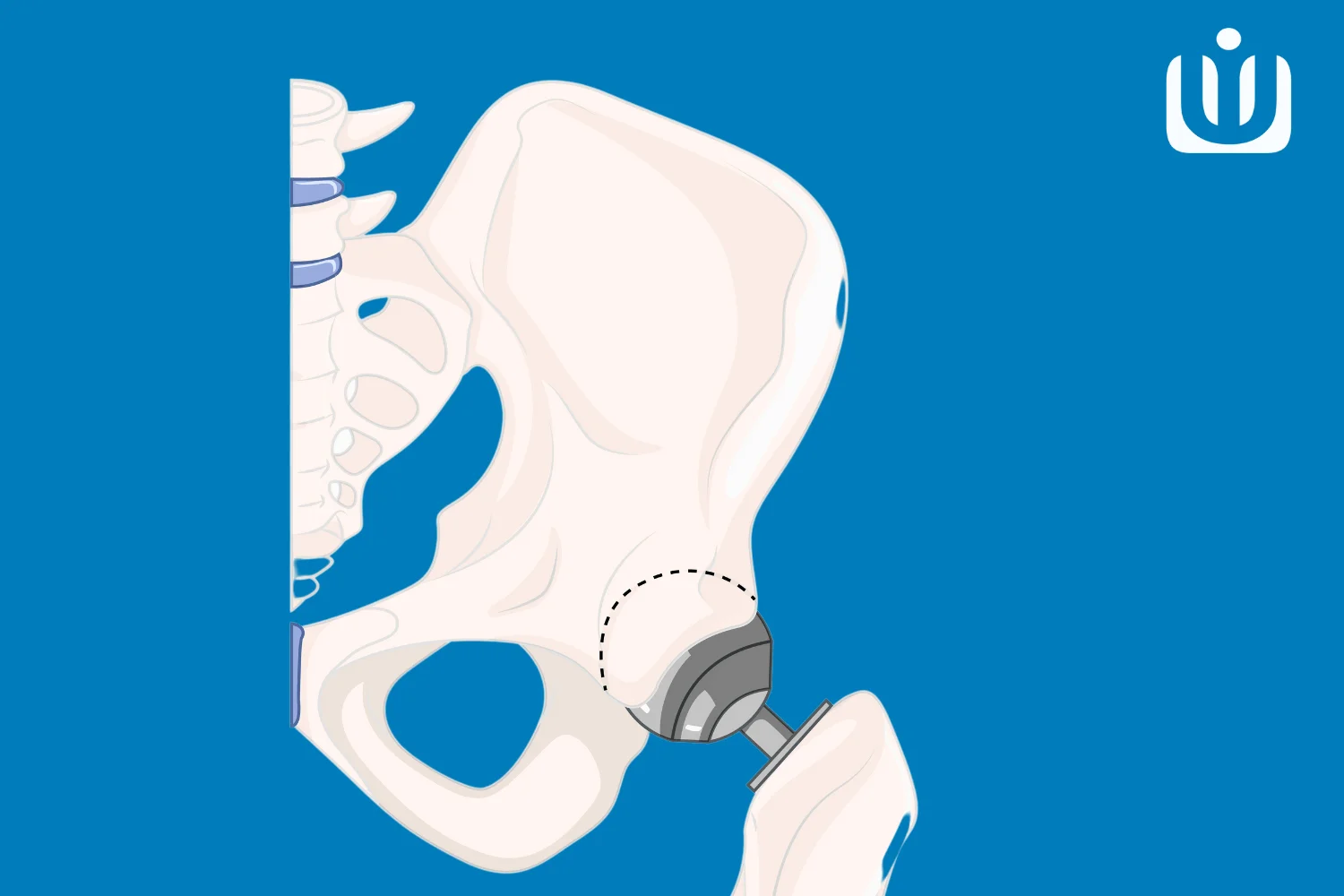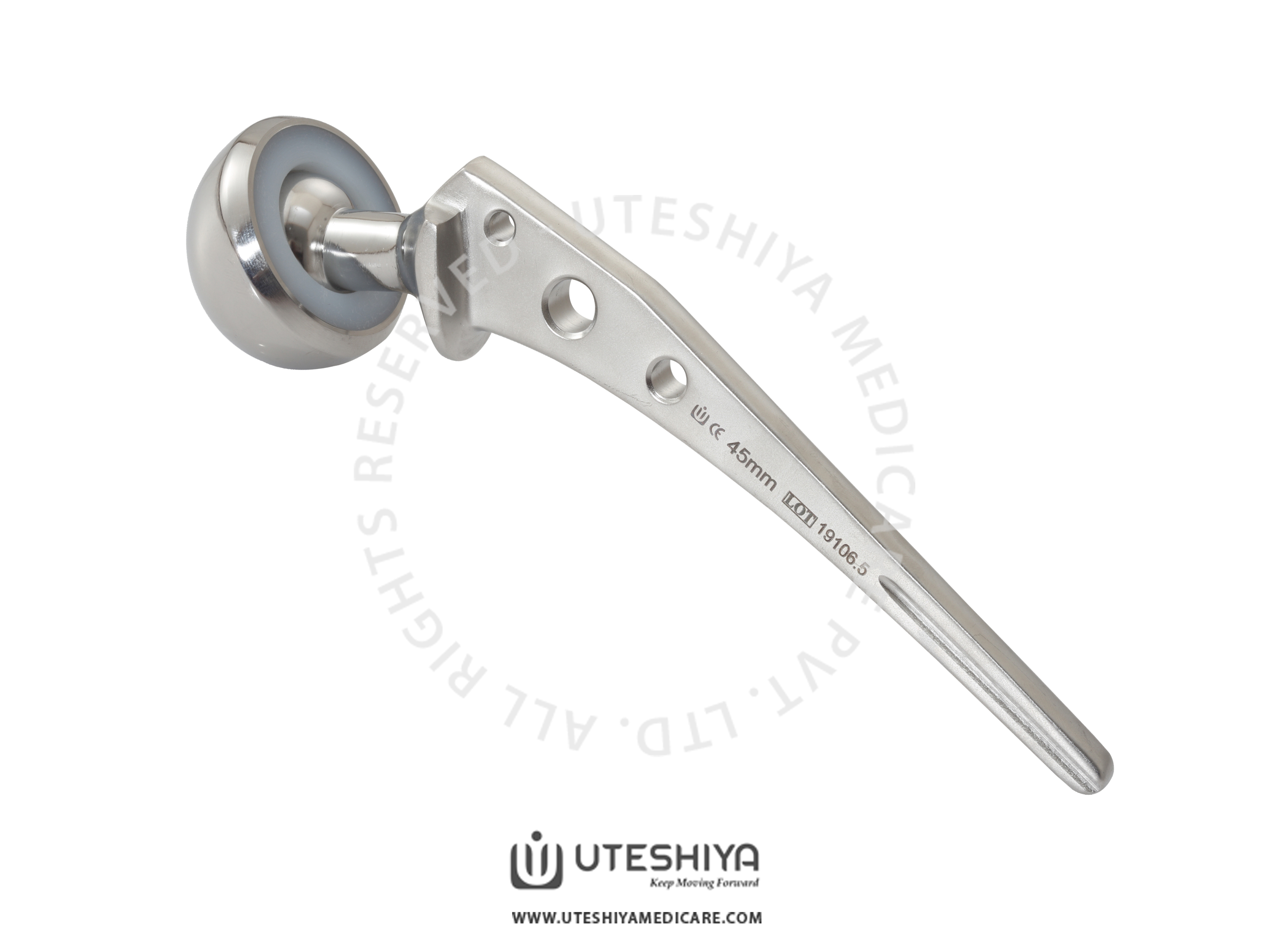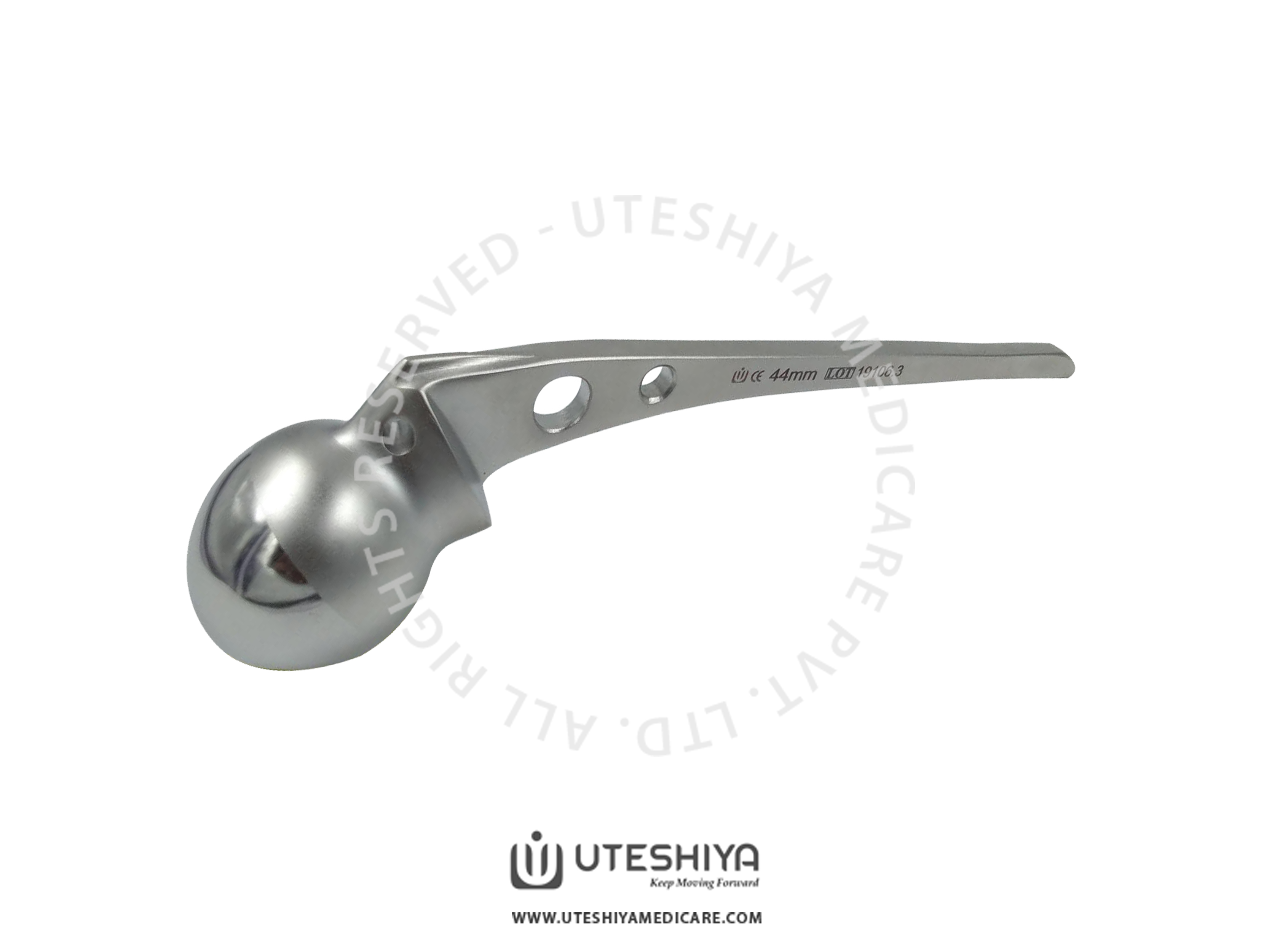 Hip dislocation is a significant orthopedic injury when the femur (thigh bone) head slides out of its socket in the hips. Various factors, including trauma, some medical issues, or as a side effect of hip replacement surgery can cause it.
Hip dislocation is a significant orthopedic injury when the femur (thigh bone) head slides out of its socket in the hips. Various factors, including trauma, some medical issues, or as a side effect of hip replacement surgery can cause it.
Bipolar Prosthesis Fenestrated Type \
\
The Bipolar Prosthesis Fenestrated Type is designed to improve stability and movement in patients, especially those with low bone quality or weakened soft tissues. The inner femoral head can move within the outer cup, giving the patient more range of motion and reducing stress on the bone-implant interface.
This type of prosthesis is frequently utilized in elderly patients or those with previous hip problems, such as osteoporosis or arthritis, when bone strength and stability are issues. The Bipolar Prosthesis Fenestrated Type is designed to improve joint function, reduce the danger of dislocation, and last for a long time.
Bipolar Prosthesis Fenestrated Type
The Bipolar Prosthesis is a hip implant used in hip replacement procedures. It is intended to simulate the natural movement of the hip joint while also increasing stability.
The Fenestrated Type of Bipolar Prosthesis design feature incorporates fenestrations or windows in the outer cup component. These fenestrations encourage bone ingrowth and circulation, which improves the implant’s long-term stability.
The Bipolar Prosthesis Fenestrated Type is indicated in the following beneficial scenarios:
-> Patients over the age of 65 with low bone quality or impaired soft tissues
-> Patients who have had osteoporosis or osteopenia in the past
-> Patients who have a history of hip problems such as arthritis or avascular necrosis
Patients should have a detailed discussion with their orthopedic physician to understand the benefits and drawbacks of the Bipolar Prosthesis Fenestrated Type and how it may be helpful in their specific case.
Austin Moore Prosthesis
Austin Moore Prosthesis is a popular orthopedic implant used in hip replacement procedures. This prosthesis, named after the British orthopedic physician Sir Austin Moore, has been used for decades and has proven to be efficient in restoring hip joint function and alleviating discomfort.
Austin Moore’s Prosthesis is suggested for the following conditions:
Osteoarthritis
The cartilage in the hip joint wears away due to this degenerative joint disease, resulting in pain and reduced movement.
Fractures of the Femoral Neck
These fractures occur directly below the femoral head and are prevalent in elderly patients with weaker bones.
Avascular Necrosis
This disorder includes the death of bone tissue due to a lack of blood supply, and it is frequently seen as a side effect of certain medical conditions or drugs.
Bipolar Disorder
Bipolar disorder is a mental illness marked by significant mood, energy, and activity changes. Bipolar disorder patients have periods of mania or hypomania and periods of sadness. These mood swings can substantially impact a person’s daily activities, relationships, and overall health.
Bipolar Dislocation
The displacement of a bone from its usual position within a joint is referred to as a dislocation. It is most commonly caused by traumatic events such as falls, accidents, or sports injuries. The shoulder, elbow, hip, and knee joints are often displaced.
Hip Dislocation Treatment
The type and degree of the dislocation, associated injuries, and individual patient characteristics all influence hip dislocation treatment.
Emergency Preparedness
This operation is often performed under sedation or general anesthesia in an emergency department or operating room. The healthcare expert will employ particular procedures and motions to reposition the hip joint.
Immobilization and Support
The form and amount of immobilization are determined by the conditions of the displacement as well as any related injuries.
Pain Management
Prescribed pain medications and using cold packs or ice to minimize swelling and discomfort are examples of pain management practices.
Physical Therapy and Rehabilitation
Physical therapy is critical in regaining the hip joint range of motion, strength, and function. The therapist will lead the patient through exercises and activities that progressively increase mobility and strengthen the muscles around the joints.
Monitoring and follow-up care
Follow-up visits with a healthcare physician are required regularly to monitor the healing process, assess joint stability, and address any issues or concerns that may occur.
Surgical Procedures
Depending on the extent of the damage and the patient’s unique demands, surgical treatments may include open reduction and internal fixation, arthroscopy, or total hip replacement.
Conclusion
Hip dislocation is a severe injury that needs immediate medical care and treatment. Understanding the reasons, recognizing the symptoms, and being aware of available treatment options are all necessary for adequately managing hip dislocations.
It is critical to remember that each case of hip dislocation is unique, and treatment methods should be changed to the specific circumstances of the individual. It is crucial to consult with a healthcare expert in order to acquire an accurate diagnosis, suitable treatment, and continuous care.

